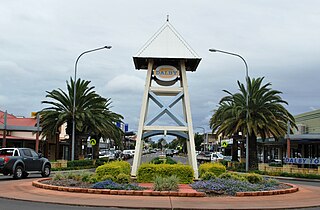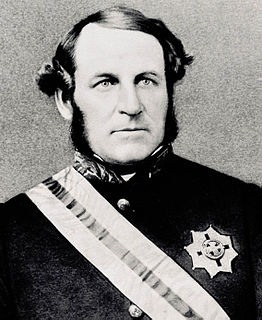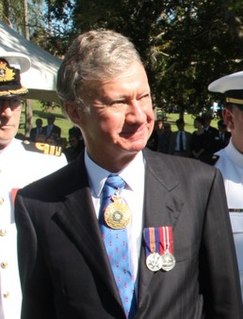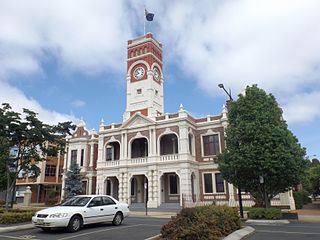
Toowoomba City Hall is a heritage-listed town hall at 541 Ruthven Street, Toowoomba, Toowoomba Region, Queensland, Australia. It was designed by Willoughby Powell and built in 1900 by Alexander Mayne. It is also known as Toowoomba Town Hall. It was added to the Queensland Heritage Register on 21 October 1992.
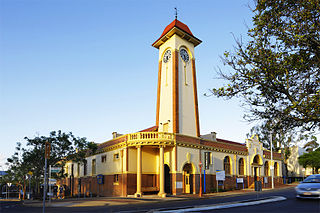
Sandgate Town Hall is a heritage-listed town hall at 5 Brighton Road, Sandgate, City of Brisbane, Queensland, Australia. It was designed by Thomas Ramsay Hall and built from 1911 to 1912 by John Gemmell. It was added to the Queensland Heritage Register on 13 January 1995.

The Ithaca Town Council Chambers is a heritage-listed former town hall of the former local government area of the Town of Ithaca, and now a community centre in Paddington, City of Brisbane, Queensland, Australia. Located at 99 Enoggera Terrace, Red Hill, it was designed by Atkinson and McLay and built in 1910 by Charles Thomas Hall and Francis Joseph Mayer. It is also known as Ithaca Library and Red Hill Kindergarten. It was added to the Queensland Heritage Register on 24 March 2000.

St John's Anglican Church is a heritage-listed church at 153 Cunningham Street, Dalby, Western Downs Region, Queensland, Australia. It is the third church of that name on the site and was designed by Henry James (Harry) Marks and built in the 1920s. It is also known as St John's Church of England. It was added to the Queensland Heritage Register on 14 August 2008.

Pittsworth Shire Council Chambers and Shire Hall is a heritage-listed former town hall at Short Street, Pittsworth, Toowoomba Region, Queensland, Australia. It was built from 1913 to 1914 by John Fortune. It is also known as Pittsworth Kindergarten. It was added to the Queensland Heritage Register on 28 May 1999.
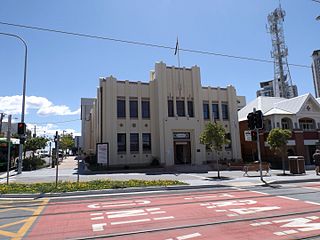
Southport Town Hall is a heritage-listed former town hall at Nerang Street, Southport, Gold Coast City, Queensland, Australia. It was designed by Hall & Phillips and built in 1935 by H Cheetham. It is also known as Gold Coast City Hall, Gold Coast Town Hall, and South Coast Town Hall. It was added to the Queensland Heritage Register on 5 October 1998.

Landsborough Shire Council Chambers is a heritage-listed former town hall and now museum at 6 Maleny Street, Landsborough, Sunshine Coast Region, Queensland, Australia. It was designed by Walter Carey Voller and built in 1924 by Alfred Ernest Round for the Landsborough Shire Council. It is also known as Landsborough Shire Historical Museum. It was added to the Queensland Heritage Register on 24 June 1999.

Queensland National Bank is a heritage-listed former bank and former town hall at the corner of Channon Street and Nash Streets, Gympie, Gympie Region, Queensland, Australia. It was designed by John Richard Hall and Claude William Chambers and built from 1876 to 1877 by Andrew Collins. It was added to the Queensland Heritage Register on 15 April 2011.

Gladstone Regional Art Gallery and Museum is a heritage-listed former town hall and now art gallery and museum at 144 Goondoon Street, Gladstone, Gladstone Region, Queensland, Australia. It was designed by Roy Chipps and built from 1933 to 1934 by relief workers. It is also known as Gladstone Town Hall & Council Chambers. It was added to the Queensland Heritage Register on 7 July 1998.

North Rockhampton Borough Chambers is a heritage-listed former town hall at 20 Bridge Street, Berserker, Rockhampton, Rockhampton Region, Queensland, Australia. It was designed by John William Wilson and built in 1885 by Messrs Burton and Smith. It was added to the Queensland Heritage Register on 27 September 2002.

Burdekin Shire Council Chambers is a heritage-listed town hall at 145 Young Street, Ayr, Shire of Burdekin, Queensland, Australia. It was designed by Frederick Smith and built in 1937 by local builder AS Wight. It is also known as Ayr Shire Council Chambers. It was added to the Queensland Heritage Register on 13 October 1997.
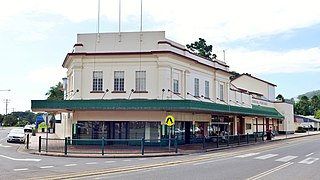
Mossman Shire Hall and Douglas Shire Council Chambers is a heritage-listed former town hall at 8-14 Mill Street, Mossman, Shire of Douglas, Queensland, Australia. It was designed by Hill & Taylor and built in 1937 by Tarmey & Euhus. It was added to the Queensland Heritage Register on 6 August 2010.

Gayndah Shire Hall is a heritage-listed town hall at 32-34 Capper Street, Gayndah, North Burnett Region, Queensland, Australia. It was designed by Hall & Phillips and built from 1934 to 1935. It is also known as Gayndah Soldiers' Memorial Hall, Gayndah Town Hall, and Gayndah and District Soldiers Memorial Hall and Council Chambers. It was added to the Queensland Heritage Register on 28 September 2001.

Goondiwindi Civic Centre is a town hall which is heritage-listed at 100 Marshall Street, Goondiwindi, Goondiwindi Region, Queensland, Australia. It was designed by Addison & MacDonald and built in 1937 by Thomas Charles Clarke. It is also known as Council Chambers, Town Hall, and Civic Theatre. It was added to the Queensland Heritage Register on 9 July 1993.
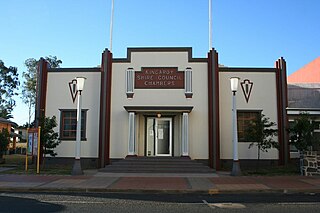
Kingaroy Shire Council Chambers is a heritage-listed former town hall and now visitor information centre and art gallery at Haly Street, Kingaroy, South Burnett Region, Queensland, Australia. It was designed by Gerard William Barlow and built in 1938 by Kell & Rigby. It was added to the Queensland Heritage Register on 9 November 2012.

Murgon Civic Centre is a heritage-listed town hall at 62-70 Lamb Street, Murgon, South Burnett Region, Queensland, Australia. It is also known as Murgon Public Hall. It was designed by Clifford Ernest Plant and built in 1938 by HG Neilsen. It was added to the Queensland Heritage Register on 9 November 2012.

Dalby Fire Station is a heritage-listed fire station at 21 New Street, Dalby, Western Downs Region, Queensland, Australia. It was designed by Matthew Williamson and built in 1935 by George Ficken. It was added to the Queensland Heritage Register on 8 October 2010.
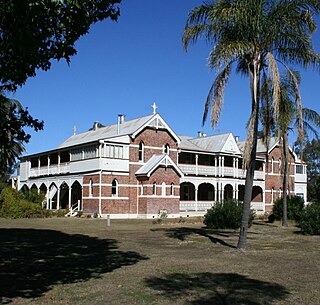
St Columba's Convent is a heritage-listed Roman Catholic convent at 169 Cunningham Street, Dalby, Western Downs Region, Queensland, Australia. It was designed by George Bernard Roskell and built in 1913 by John Draney. It is also known as Iona. It was added to the Queensland Heritage Register on 9 December 2010.

Granville Town Hall is a heritage-listed former town hall at 10 Carlton Street, Granville, Cumberland Council, Sydney, New South Wales, Australia. It was designed by C. A. Harding and J. W. Hill (auditorium). The council chambers were built in 1888 by Banks and Whitehurst, with the auditorium added in 1900, to serve as the seat of the Municipality of Granville. The property is now owned by Cumberland Council since 2016, having been owned by the City of Parramatta since 1949. It was added to the New South Wales State Heritage Register on 5 December 2003.

